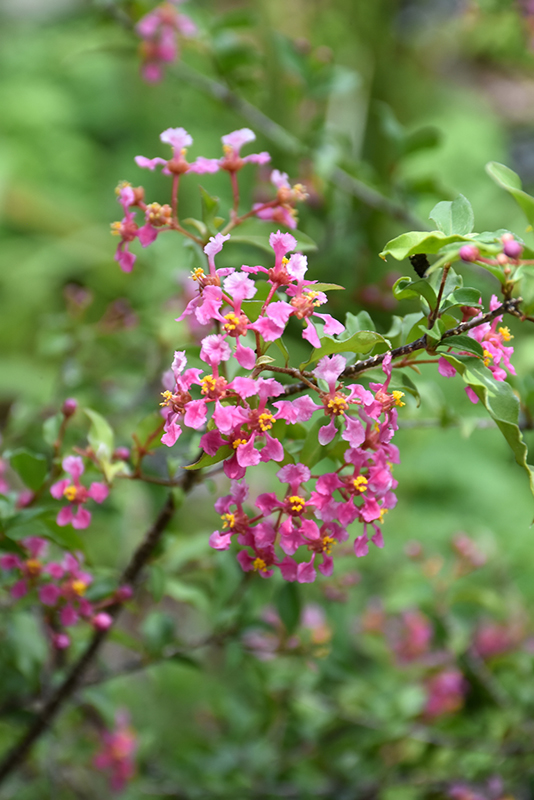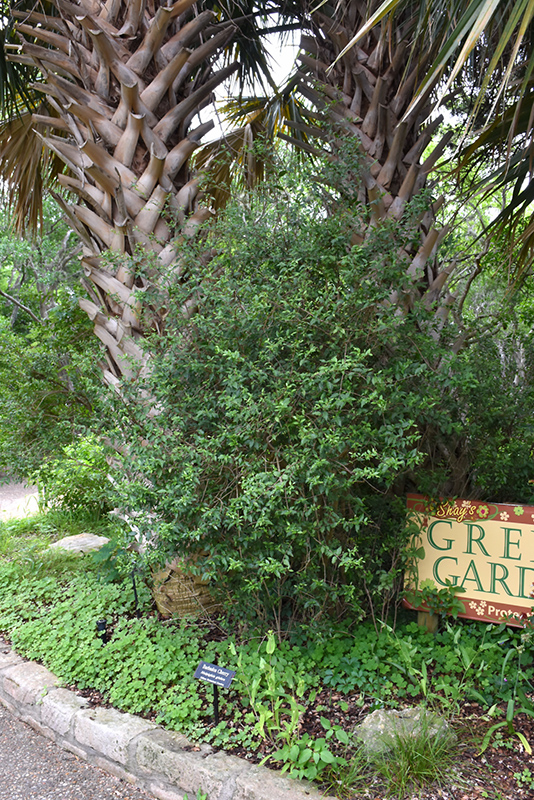Height: 18 feet
Spread: 15 feet
Sunlight:
![]()
Hardiness Zone: 10a
Other Names: Antilles Cherry, Escobillo, Wild Crapemyrtle
Description:
A shrub or semi-deciduous small tree, with an upright habit and dark green foliage; panicles of pink crapemyrtle-like flowers are followed by red fruits with a very sour taste; requires wind protection; great for the back of borders
Edible Qualities
Barbados Cherry is a large shrub that is typically grown for its edible qualities. It produces red round fruit (technically 'drupes') which are usually ready for picking from late summer to early fall. The fruits have a sour taste.
The fruit are most often used in the following ways:
- Eating When Cooked/Prepared
- Preserves
Features & Attributes
Barbados Cherry features showy panicles of fragrant pink orchid-like flowers at the ends of the branches from late spring to early summer. It has dark green evergreen foliage. The fuzzy oval leaves remain dark green throughout the winter. The fruits are showy red drupes carried in abundance from mid summer to mid fall.
This is a multi-stemmed evergreen shrub with an upright spreading habit of growth. Its average texture blends into the landscape, but can be balanced by one or two finer or coarser trees or shrubs for an effective composition. This plant will require occasional maintenance and upkeep, and should only be pruned after flowering to avoid removing any of the current season's flowers. It is a good choice for attracting birds, bees and butterflies to your yard. Gardeners should be aware of the following characteristic(s) that may warrant special consideration;
- Messy
Aside from its primary use as an edible, Barbados Cherry is sutiable for the following landscape applications;
- Accent
- Mass Planting
- Hedges/Screening
- General Garden Use
- Container Planting
Planting & Growing
Barbados Cherry will grow to be about 18 feet tall at maturity, with a spread of 15 feet. It has a low canopy with a typical clearance of 1 foot from the ground, and is suitable for planting under power lines. It grows at a medium rate, and under ideal conditions can be expected to live for 40 years or more. This is a self-pollinating variety, so it doesn't require a second plant nearby to set fruit.
This plant is typically grown in a designated edibles garden. It should only be grown in full sunlight. It prefers dry to average moisture levels with very well-drained soil, and will often die in standing water. It is considered to be drought-tolerant, and thus makes an ideal choice for xeriscaping or the moisture-conserving landscape. This plant should not require much in the way of fertilizing once established, although it may appreciate a shot of general-purpose fertilizer from time to time early in the growing season. It is not particular as to soil pH, but grows best in sandy soils, and is able to handle environmental salt. It is somewhat tolerant of urban pollution, and will benefit from being planted in a relatively sheltered location. This species is native to parts of North America.
Barbados Cherry is a good choice for the edible garden, but it is also well-suited for use in outdoor pots and containers. Its large size and upright habit of growth lend it for use as a solitary accent, or in a composition surrounded by smaller plants around the base and those that spill over the edges. It is even sizeable enough that it can be grown alone in a suitable container. Note that when grown in a container, it may not perform exactly as indicated on the tag - this is to be expected. Also note that when growing plants in outdoor containers and baskets, they may require more frequent waterings than they would in the yard or garden. Be aware that in our climate, most plants cannot be expected to survive the winter if left in containers outdoors, and this plant is no exception. Contact our experts for more information on how to protect it over the winter months.


